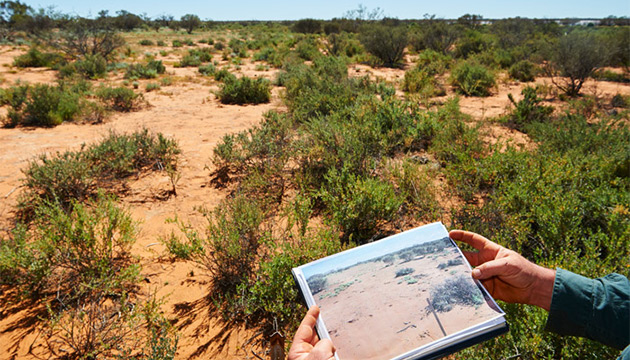In an extraordinary pasture experiment, all stock has been removed from vast Wooleen Station in the Murchison region of Western Australia.
Story By Ken Eastwood
At the beginning of this year, Wooleen Station, in the Murchison, WA, received more rain in a month than it had for the whole previous couple of years. Beautifully spread over six weeks, the 130 millimetres of rain made up most of the long-term annual average of 200mm. Thick, lush grass 60 centimetres high soon grew densely across the station.
To take advantage of this green bonanza, Wooleen’s neighbours increased stocking rates. But across Wooleen’s 1530 square kilometres, there wasn’t a cow, bull, steer or sheep to be seen. As part of its counter-cultural property management plan, the last few cattle were removed in January, and there are no plans to put any more on for at least another year. “If we look after this country, we’ll be able to get production out of it for the next 500 years,” radical station owner David Pollock says. “The aim at the moment is just to survive and get as much growth out of the landscape as possible.”
Wooleen, a sprawling, beautiful property of mulga, red granite outcrops and a nationally important ephemeral wetland on the confluence of the Murchison and Roderick rivers, was founded in 1886 and soon developed into a huge sheep enterprise. By 1935, it had 27,000 sheep and 1000 cattle. But then drought struck. “They went into the drought with 26,000 sheep, plus cattle, and they lost 16,000 sheep within a few years, just of starvation,” David says. “You look at photos of the time and it was just a dust bowl. It wasn’t the fault of the pastoralists – they were encouraged to keep as much stock on the land as they could.”
David says that the land never recovered from that period, and grazing over the next 70 years decimated what remained of what should have been permanent vegetation – bluebush, saltbush and perennial grasses. “Up to 75 percent of the palatable perennials were wiped out,” he says, looking around at areas that are now devoid of any permanent vegetation. “These areas have essentially been bare for the past 80 years. That land hasn’t been producing anything for that time.”
He says the property is devoid of the most palatable, nutritious and long-lasting plants. “Some plants are ice-cream bushes – they get eaten first – then some are chocolate bushes, and they get eaten next. Now we’re down to the brussels sprouts.”
David’s earliest memories are of travelling into Wooleen when a friend of the family owned the property. His family took over the lease and moved in when he was 10, and David took over the running of the property in 2007, at the age of 27. He immediately set about removing all stock.
Initially, David thought he’d take the stock off just for 3–4 years to let the land recover, but he soon found that wasn’t enough. After five years of no stock, a reintroduction of 400 head across a quarter of the property – for financial reasons – showed that the land wasn’t ready. “Where we put the cattle, the gains have been lost,” he says, claiming it will be at least 15 years of minimal or no stock on the property to bring it back to good condition in most areas, but in other areas 50-plus years still may not be enough.
This Story is from Issue #102
Outback Magazine: Aug/Sept 2015










